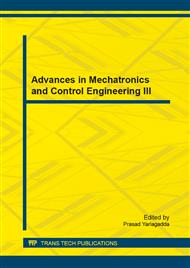p.220
p.228
p.233
p.238
p.242
p.252
p.260
p.264
p.268
Parameter Selection Based on Support Vector Machines for Tongue Spectral Identification Model
Abstract:
Support Vector Machine (SVM) method is suitable for machine learning. In order to detect pathological information from tongue diagnosis rapidly, noninvasively and objectively, a near infrared spectral identification model is proposed based on SVM. The tongue spectral data of healthy people and hepatitis patients were collected. Twenty two samples were obtained for individual groups, and for each group, fifteen samples were randomly selected and used as the training sets, while the other seven were taken as the prediction sets. For the data sets, The effects of the principal component number, kernel parameters, and kernel functions on the identification model were investigated respectively. The results showed that the penalty parameter c was always 0.25, not related to the values of the principal component number and kernel parameter g. The kernel parameter g decreased along with the increased number of principal components, and ultimately reached a relatively stable value. When the Radial Basis Function (RBF) was applied, the established model was the best, indicating that the SVM approach is feasible to classify and recognize tongue near infrared spectroscopy, as along as right parameters are selected. This can provide a novel tongue spectral analysis method to distinguish healthy individuals from hepatitis patients.
Info:
Periodical:
Pages:
242-251
Citation:
Online since:
October 2014
Authors:
Price:
Сopyright:
© 2014 Trans Tech Publications Ltd. All Rights Reserved
Share:
Citation:


